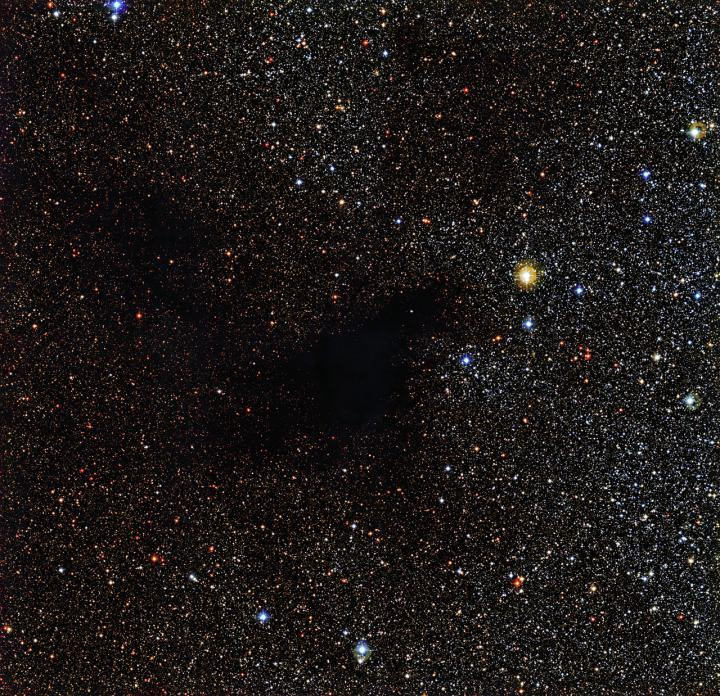ESO's 'missing stars' being masked by dark nebulae

A gaping hole has been found in a star field 700 light years away, an image from the European Southern Observatory has revealed.
The missing stars, however, have not gone astray. Instead they are being masked by a dark nebula – the birthplace of future stars.
The nebula is an area of space clogged with gas and dust. Named LDN 483 – for Lynds Dark Nebula 483 – it is located in the constellation of The Serpent, and is a particularly dense molecular cloud.
It contains enough dust material to completely block visible light from stars in the background. LDN 483 qualifies as a dark nebulae because of its ability to obscure light.
"The starless nature of LDN 483 and its ilk would suggest that they are sites where stars cannot take root and grow. But in fact the opposite is true: dark nebulae offer the most fertile environments for eventual star formation," an ESO statement said.
The ESO said dark nebulae like this one can been thought of as the womb for stars.
"In this first stage of stellar development, the star-to-be is just a ball of gas and dust contracting under the force of gravity within the surrounding molecular cloud. The protostar is still quite cool -- about -250 degrees Celsius -- and shines only in long-wavelength submillimetre light. Yet temperature and pressure are beginning to increase in the fledgling star's core.
"This earliest period of star growth lasts a mere thousands of years, an astonishingly short amount of time in astronomical terms, given that stars typically live for millions or billions of years."
Over millions of years, the star will become warmer and denser, eventually becoming a luminous star.
Eventually, the dark nebula will disperse and lose opacity and the missing stars will return into view, "but only after the passage of millions of years".
© Copyright IBTimes 2025. All rights reserved.






















